What Exactly Are LECA Balls, and Why Are They Beneficial for Your Plants?
LECA is an acronym for lightweight expanded clay aggregate, which can also be referred to as hydroton stones or clay pebbles. They are balls/pebbles ranging in size from 0.3″ to 0.6″ and are made from clay made porous in the firing process. They are used in hydroponics and in conjunction with, or as an alternative to, growing mediums such as soil or potting mix.
LECA or clay pebbles have grown in popularity as a growing medium over the last thirty years. This has particularly been the case with the growing fashionableness of hydroponics.
There are several reasons for its rise in use, not least because it has a number of benefits over more traditional growing mediums. It has become particularly common as an alternative to potting mixes for indoor plants as it helps prevent overwatering, in addition to having a number of aesthetic qualities.
What Exactly Is LECA
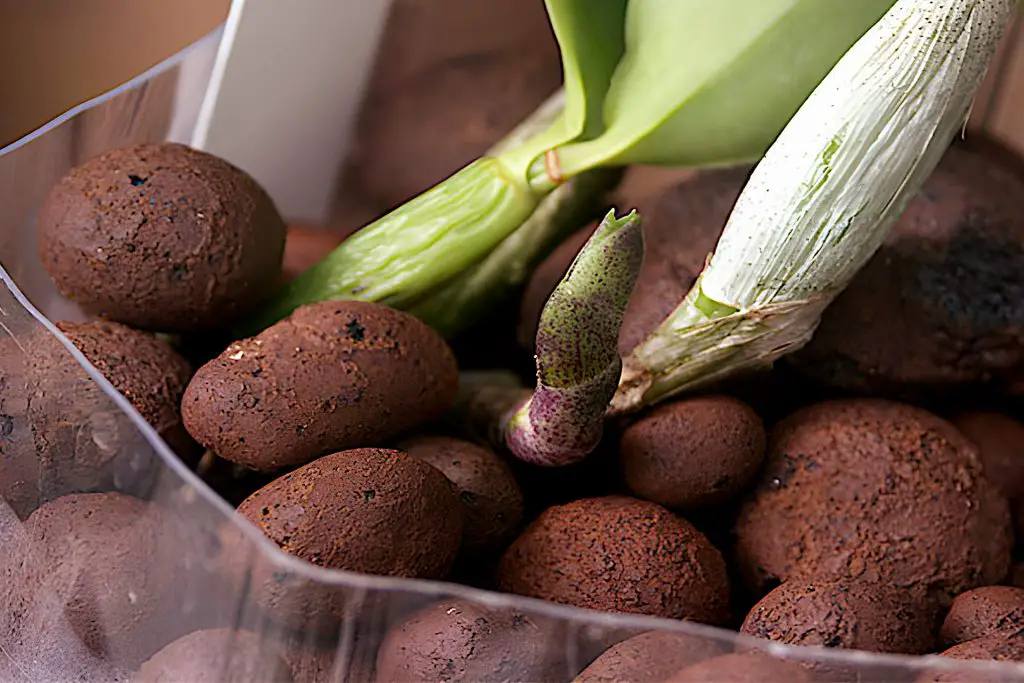
Expandable clay aggregate has been around for over a hundred years. It was first developed for use in shipbuilding in 1917 but has since acquired many different applications, from use in construction materials to being an alternative growing medium, particularly in hydroponics.
The LECA balls themselves are an inorganic material. They are made from coarse clay that has been formed into balls/pebbles and fast-fired at around 2,200°F. The process removes latent gasses trapped inside the balls leaving a pinhole texture and making the pebble porous.
They are often described as LECA balls or hydroton pebbles, and they are slightly irregular in shape. They are graded into different sizes. Generally, LECA balls that are used as a growing medium are between 0.3″ to 0.5″ in diameter, although you can find sizes up to 1.2″ (30mm).
Why Are LECA Balls Useful for Plants?
There are a variety of reasons why you would use LECA balls for planting. They are more commonly considered for indoor plants and plants that are in containers such as pots or trays. They can be used on the ground but the benefits in doing so are decreased.
Helps Prevent Overwatering
One of the biggest issues facing indoor plants is the possibility of over watering which can lead to root rot, which will ultimately destroy the plant.
Using LECA helps because of the pinhole structure of the balls. They allow the redistribution of water around the roots preventing them from being choked and drowned. This can be a problem if you solely use soil or potting mix medium that becomes saturated.
Using LECA Can Be a Substitute for Some Number of Soil Types
Different plant species grow better in different soil types. If you grow a wide variety of plant species you are likely to use the potting mix which best suits the species’ needs. This can lead to needing to have various types of potting mix.
By using LECA you can reduce the number of potting mixes that you use, especially if you are solely using LECA as a growth medium. Much, though, will depend on the plant but if the plant has an abundant root structure then it should do well with LECA with the relative nutrients it requires, added.
LECA Balls Reusable and Environmentally Friendly
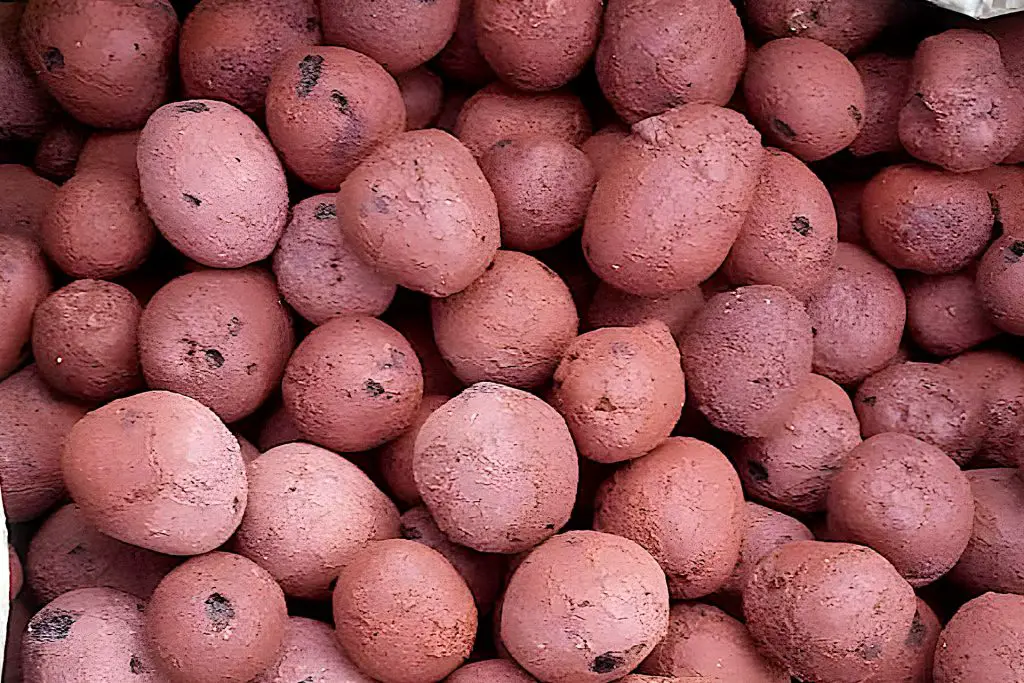
One of the main benefits of using LECA balls is that they are reusable making them environmentally friendly. You can reuse them time after time without any loss of quality making them a great green option and saving you money over the long run.
They are also very easy to clean. Simply place them in a bucket filled with warm water and let them soak for about 5-10 minutes. Then rinse off the excess water and leave them to dry. If you do want to sterilize them you can boil them for 10 minutes on a rack.
LECA Balls Can Help Prevent Pests
Insects such as aphids and fungus gnats that can plague plants are attracted to damp soil and decomposing matter therein, laying their larvae and feeding on a plant’s roots. Indoor plants are particularly susceptible to the problem as overwatered plants’ and confined spaces provided by pots exacerbate the problem.[1]
The damage to a plant can be extensive, stunting growth, and in extreme cases, killing the plant. Using LECA balls helps alleviate the issue. If you are using them as your sole growing medium then there won’t be any damp matter for the fungus gnats to bury their larvae in.
LECA Balls Are Cleaner and Aesthetically Pleasing
If you are using LECA as the sole growing medium then the process is considerably cleaner than if you were using soil or a potting mix. Other than clay dust you should find that there is little to no debris to clean up.
The cleanliness of the process and balls allows the use of transparent containers, which usually provide an aesthetically pleasing look, depending on your tastes.
Drawbacks of Using LECA Balls
Despite all the positive benefits LECA balls have, they are not a growing medium panacea. There are some drawbacks to using them that need to be considered for each use case.
Initial Outlay
Whilst over the long run, because of their reusability, LECA balls are a reasonably economical growing medium, however, in terms of the initial outlay, they are a much more expensive option than potting mix. The difference can be quite substantial, three or four times the cost of the equivalent amount of potting mix needed, and if you have large enough requirements then this can add up.
Lack of Nutrients
In order for plants to grow and thrive, they need nutrients such as nitrogen, potassium, and other beneficial supplements that are drawn from the soil as the plant grows. LECA balls have no real nutrient value on their own. You have to add the right nutrients, in the form of liquid fertilizers or compost teas, to the water to provide the plant with what it needs to grow.
This in turn adds to the cost. Admittedly, potting soil itself will need nutrients added to supplement growth after a period of time, but it should have the necessary amounts of beneficial supplements to support the initial growth stages, which LECA balls do not have. This ultimately will further increase initial potting costs.
Further, you will need to keep an eye on the pH levels of the solution that is in the pot with the LECA. This might entail the need to purchase a pH monitor.
Plants May Not Always Take
Changing growing mediums can be risky. Not all plants will transition comfortably to using LECA balls as a sole growing medium. Although most plants should be okay with LECA, the plants that grow best with LECA are those that have abundant root systems.
Washed and Cleaned
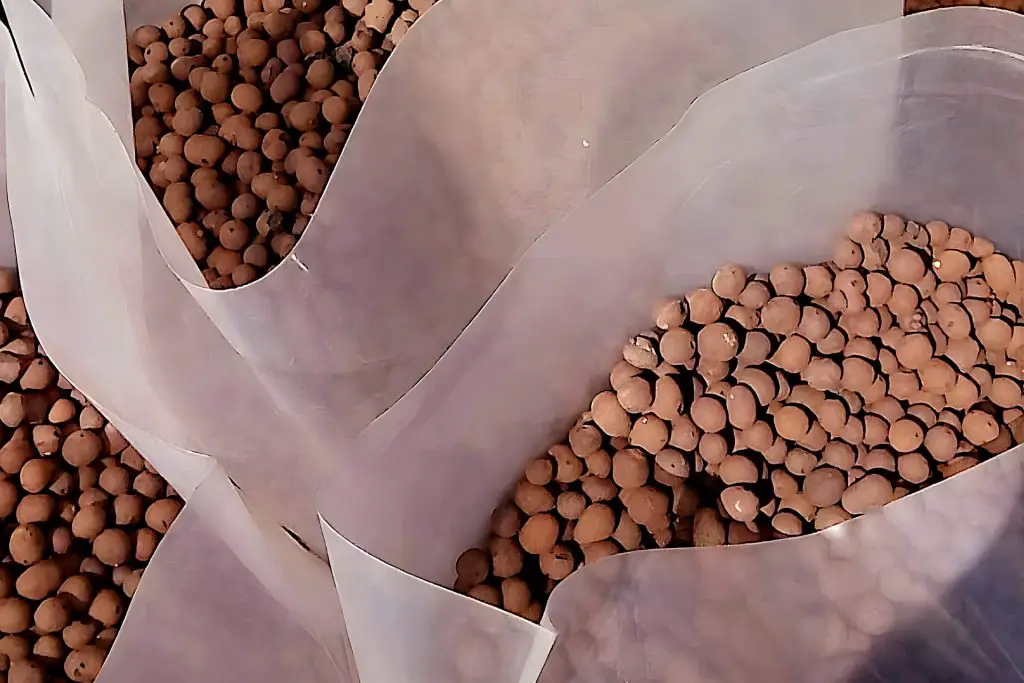
Usually, you won’t be able to use the LECA ball straight out of the sack. If they have not been used before they will need to be prepared by being washed and soaked and dried. If you are reusing LECA balls these will likely need to be cleaned.
These processes, while simple enough, take time and effort that you wouldn’t need to expend with potting mix. This time can add up, and be a hindrance to wanting to use them if you are time-poor.
New Pots and Containers
One of the benefits of using LECA is that they provide a certain aesthetic quality. If you want to fully benefit from this you would need to have transparent pots and containers. Obviously, if you don’t have these it would require a further financial outlay.
What Types of Plant Grow Best with LECA Balls
Most plants will grow using LECA as your growth medium but some plants will do better than others. In terms of indoor plants, there are certain qualities to look for.
Some plants like to dry out between watering changes because they like to absorb lots of moisture. Others like to stay moist because they like to hold onto water. With LECA, plants that like to dry out are better suited.
A strong and abundant root system, such as exists on orchids, also tends to thrive better when LECA balls is used as the growing medium
In addition, you need to consider the types of nutrients the plant needs. Some plants require a high nitrogen content while others require fewer nutrients. With LECA, plants that don’t require a nutrient-heavy growing medium, perform better.
Finally, there are plants also require a high level of air circulation around them as they feed off the oxygen while others can exist with lower oxygen levels. LECA balls provide excellent airflow conditions so plants that thrive with heavy oxygen requirements grow well.
Is LECA Better Than Soil?
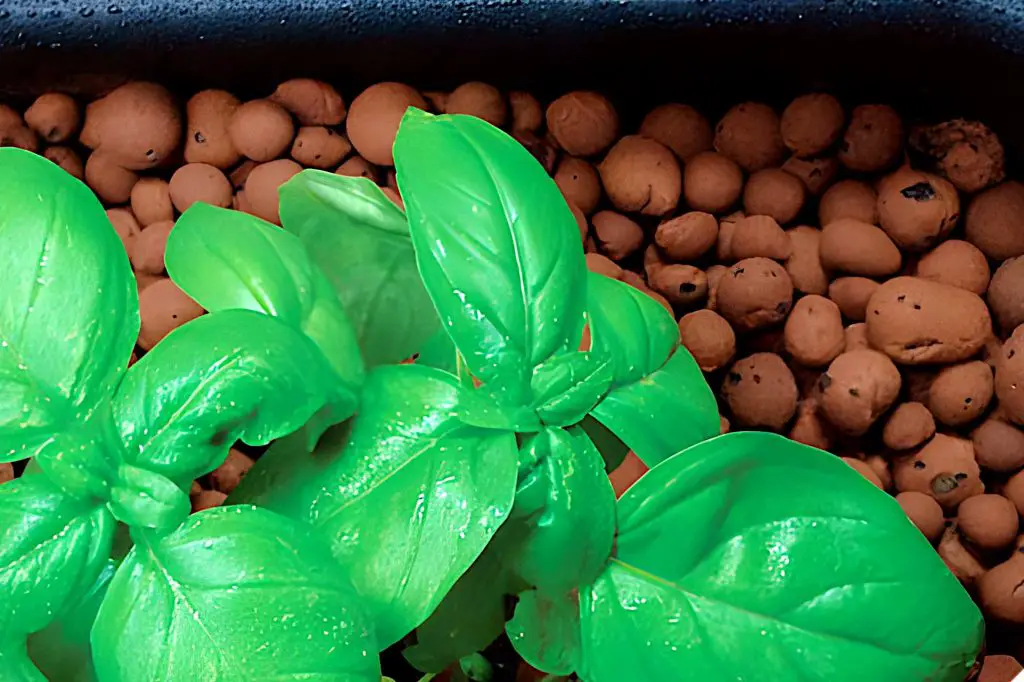
Choosing between LECA or soil usually comes down to the use case and circumstances. It is not that one growing medium is better than the other, each has its role and uses.
There are pros and cons in using either medium and these need to be weighed up before choosing. As we have already noted LECA has some interesting properties and advantages that soil or potting mixes don’t have. However, not all plants will grow best with LECA as the sole growing medium.
In general, LECA really comes to the fore in terms of use with indoor and potted plants, particularly its ability to prevent root rot and stave off pests. When it comes to planting outside, in the ground, its advantage, to a large extent, disappears.
Why Doesn’t LECA Cause Root Rot?
Bearing in mind that with LECA part of the plant roots are always in water, you would expect that this would be a primary cause of root rot. This however excludes the introduction of airflow around the roots.
One of the key properties of LECA balls is that when they are poured into a container their round, slightly irregular shape, leaves tiny air gaps in the strata that are formed. The roots use these gaps to force their way down through the strata and the porous LECA balls provide airflow. It is this airflow that prevents the root rot.
Can You Mix LECA With Soil?
Plants should be able to grow and thrive in a single growing medium, whether it be soil, potting, LECA, or another. However, there can be both growing and aesthetic benefits in mixing LECA clay pebbles and soil/potting mix together.
The main benefit of mixing clay pebbles and soil is that it creates a nutrient-dense mix that can prevent overwatering.
With indoor plants and potting mix, it is slightly more involved. There are going to be fewer nutrients in the potting mix than if using loam soil, so you will need to add fertilizer after a few weeks. When will depend on what you are planting and its growth stage. Again, the key benefit is clay pebbles can help with preventing overwatering.
In addition, there are a number of aesthetic benefits to using clay balls with soil. Although the majority of LECA balls are a dull brown color, the layered effect in clear pots can look very impressive. You can also now get colored pebbles which can lift this aesthetic even more.
How To Grow With LECA Clay Balls
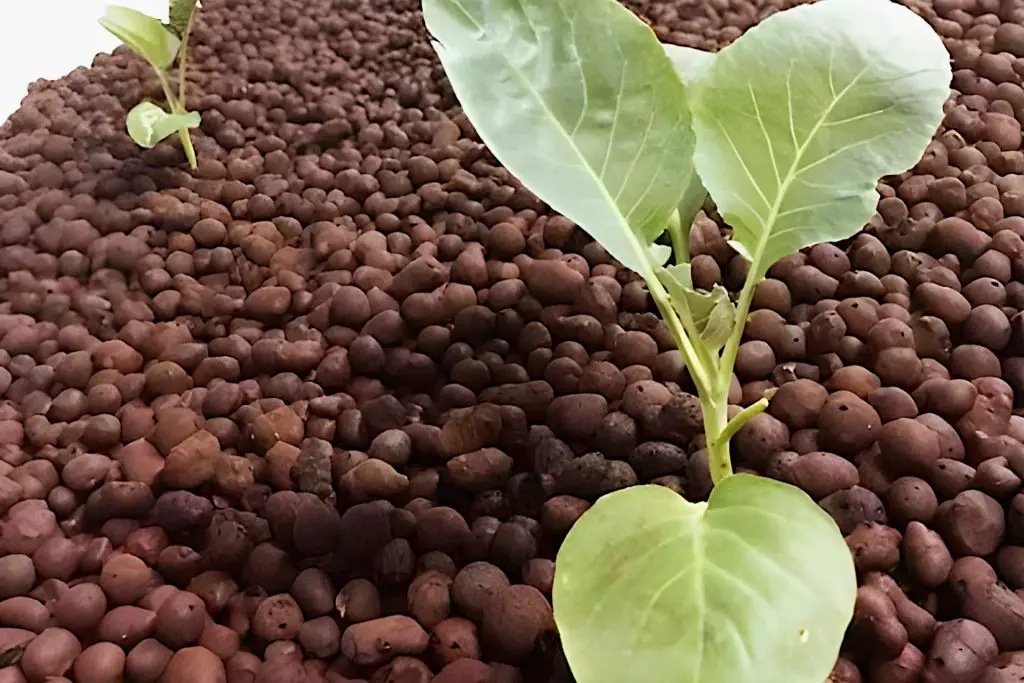
There are a number of different ways in which you can grow with LECA balls from using it as a stand-alone growing medium to combining it with other growing mediums. The way that you choose will be largely dependent on the reasons for doing so.
You can use the clay pebbles as a mulch, you can mix the clay pebbles into the soil, or can use the clay pebble as a layer at the bottom of your pot as a substrate for the roots. Each method has its own particular benefits and can produce good growing results based on the use case.
You can read more about different ways to grow with LECA balls here.
Pros and Cons of Using LECA Balls
| Pros of Using LECA Balls | Cons of Using LECA BAlls |
|---|---|
| Less chance of overwatering | Initial cost outlay |
| Easy to handle | Lack of Nutrients |
| Lightweight | Need for expensive special liquid fertilizers |
| Cleaner than soil | Need to be washed and prepared before use |
| Can be used indoors or outdoors | Need cleaning if reused |
| Doesn’t break down over time | The plant might not take to the transition |
| They infinitely reusable | New transparent pots for aesthetic qualities |
Summary: What Exactly Is LECA, and Why Are They Beneficial for Your Plants?
LECA balls are a great way to grow plants, especially indoor or containerized plants in pots. They are an inorganic, clean, reusable material that is both environmentally friendly and aesthetically pleasing. As a growing medium, they allow you to grow plants without having to worry about watering them and helping prevent overwatering.
There are, however, other considerations such as its drawbacks in terms of initial outlay, lack of nutrients, and preparation requirements. It is also less effective when used as a growing medium outside in the ground.
If used with the right use cases, LECA is an excellent growing medium to add to your armory of potting mixes soils, and amendments.
Notes
[1] The University of California, J.A. Bethke: Pests in Gardens and Landscapes: http://ipm.ucanr.edu/PDF/PESTNOTES/pnfungusgnats.pdf
